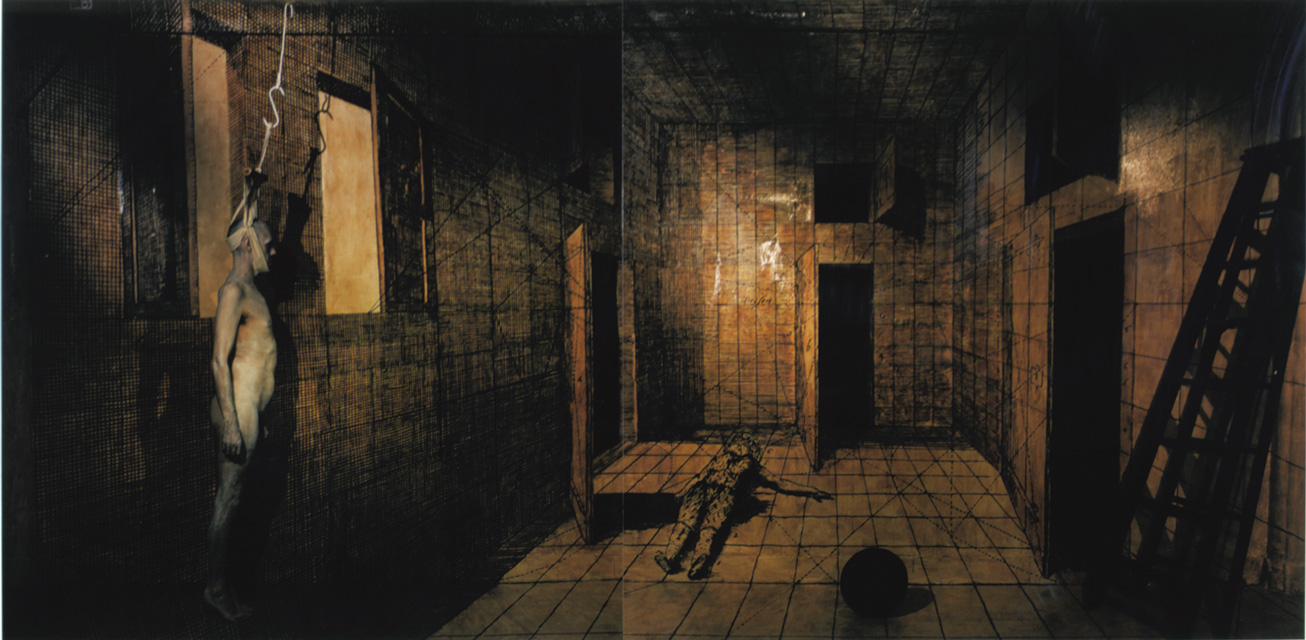


A prevalent strategy in Australian art of the 1990s, developing out of the emergent post-modernism of the 1980s, is the investigation of the historical forms of the image. Partly a response to the sheer availability of images in the age of mechanical and digital reproduction, and partly resulting from the incorporation of analytical models from semiotics, film criticism and cultural studies, such investigations often approached images with a cool, sceptical frame of mind. This produced many art works dedicated to the dissection of images and their power.
Farrell and Parkin are steeped in the history of the image, but they do not bring to their analysis the sceptical tone of deconstruction. They are certainly interested in the genealogy of images; they trace the passage of gestures and motives through religious, scientific, alchemical, medical and political imagery over a number of centuries. And they are interested in the specialist, and highly evocative, pictorial languages that have developed in film noir, within socialist revolutions and religious movements. But they are also concerned to maintain the presence and power of images, rather than to pick them apart. This presence is both physical and conceptual. Farrell and Parkin physically reconstruct scenes from older images, giving them a concrete quality that overcomes the objective tone of historical distance. And they endeavour to demonstrate that the ideas and practice in these images still have currency in the present.
Working collaboratively, Farrell and Parkin produce highly theatrical images. These are quite literally theatrical, for the artists physically construct painted backdrops, papier-mâché sets and costumes that are then captured in the rich colours and tones of large-scale, type C photographs. Rejecting the scanning and digital manipulation now frequently used to modify and reiterate found images, the artists use theatrical devices as a means of connecting more powerfully with the history of the image and the optics of the camera. The 'Black room' series, for example, explored arcane medical techniques. The physical re-enactment of such treatments gave the artists a far greater understanding of their aims and impact. Significantly, the artists were able to reaffirm the original therapeutic intent of the procedures; that is, they were able to put the lie to the initial impression that some kind of torture was being depicted. And, as part of their ongoing research into the history of medical treatment, Farrell and Parkin also discovered that the treatment of the human body has remained remarkably consistent over the centuries, in spite of recent advances in medical technology.
Equally important is the understanding of the photographic process underlying the construction of sets and tableaux. In a sense, Farrell and Parkin build photographs rather than sets; that is, they construct, paint and light scenes in ways that make allowance for the distortions of the lens and the translation of light into emulsion. Their photographs sidestep the hyperreal surfaces of digital imagery in order to grapple with the real processes of photography. In doing so, they shift attention away from the reality of the scene before the lens (it is not intended to be seamlessly convincing) and towards the reality of our response to a photograph. As curator Catherine Grout has observed, 'the representation itself fails to suspend my disbelief, but my body still reacts to what is represented'.1
Such a response reveals how deeply theatricality is rooted in the post-modern art of the 1990s. While modernist critics of the 1960s disdained theatrical effects as a corruption of the visual arts, Farrell and Parkin show how theatricality is used to draw attention to the production of the image, its impact on the viewer and its means of communicating knowledge. In this Farrell and Parkin differ dramatically from those who are jaded with the plenitude of images available to us; they continue to see the images as a source of constant enrichment, rather than as a cause for exhaustion.
- Chris McAuliffe
Rose Farrell and George Parkin are represented in Australia by ARC ONE Gallery, Melbourne and Boutwell Draper Gallery, Sydney.